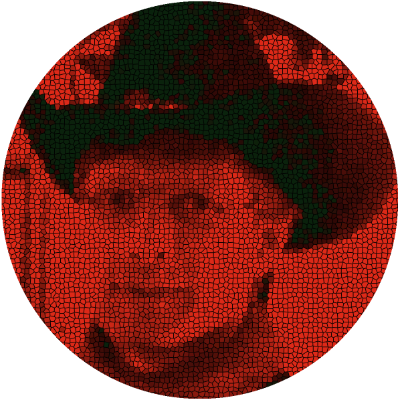Since the Klartext conference I have in my possession two issues of the newspaper style publication “Corrections and Clarifications” by Anita di Bianco (Download PDF). One dates from September 2001 (September 1 to be precise – I guess the exact day is of importance in this particular case), one from January 2005. I have no idea how many issues there have been between the two.
The paper contains nothing but corrections and clarifications published by english language newspapers. I must admit that I have not spent much time reading in them. My curiosity kept me going for 3 or 4 articles (clarifications) in each of the papers. I stopped because I got bored, not because my curiosity was satisfied.
In her presentation Anita di Bianco suggested, that it was very insightful to read the clarifications as they were showing a lack of understanding of other cultures, maybe even a lack of interest in them. She did not specify what kind of attitude she was able to identify through reading all those clarifications, but everybody seemed to understand all too well what she meant.
Frankly: I don’t think that di Bianco has read many of those clarifications herself. Doing that would be a completely brain dead. I can’t even think of a psychological or mental condition that would enable someone to enjoy reading them. Finding patterns in those corrections by reading them would clearly demand other social and cultural skills than one is likely to find amongst people who suffer from autism, yet it would demand certain talents that ONLY someone who suffers from autism is likely to have.
Is it a problem that neither artist nor audience have read much in “Corrections and Clarifications”?
Apparently they join in a conspiracy in order to manipulate the truth and fool themselves into believing that they see something which is not there and that what they see is same for them all. Art usually is exactly this kind of a religious conspiracy. It is about constituting what art is and it is about defining a social group (that of artists and people interested in art). So it seems like everything is the way it should be.
I don’t think so: It is fine as long as the topic of art are esthetics and formal conceptual reflections, but it has a rotten smell when art claims political significance. Di Bianco’s project is politically questionable because she does exactly what she seems to be criticizing: She is driven by stereotypes and is amplifying them by claiming something that she hasn’t researched. Worse than that, she (implicitly) suggests that research is not even needed as long as you have an opinion. Fox News couldn’t be worse.
If she was really interested in the implications of corrections and clarifications in english language newspapers, she would probably talk to linguists and psychologists in order to learn something about errors and mistakes. Then she would conceptualize a way to analyze the data she gets and would finally get together with a programer who could help her create the software she would need for the data mining. Her concept along with the results could be presented to a mature audience (as oposed to an audience that is not taken seriously). If not in an exhibition it could be published on the web, where more people would see it anyway. Better even: Just program a tool that allows people to research the clarifications themselves and discuss their results.
While di Bianco may think of this as being as absurd and boring as actually reading all the corrections and clarifications herself, I would love to see this kind of a project instead of all the posing that pretends to be critical, while being nothing but affirmation for a certain social group. Often contemporary art and critical practice is displayed as being in the proximity of science. No one seems to see the fundamental difference: It hardly ever affords open results.
One of the options when applying for “Künstlersozialkasse” (german health insurance subsidy for artists) is “experimental artist”. I don’t see much experimental art and when when I do, it is mostly not labeled “art” (nor “critical practice”). I have no idea how the current funding systems could be transformed in order to encourage truly experimental free practice: Imagine it turned out that no significant pattern can be found in the great number of clarifications. Such a result seems inexhibitable in the traditional exhibition spaces and would therefore be a disaster.
